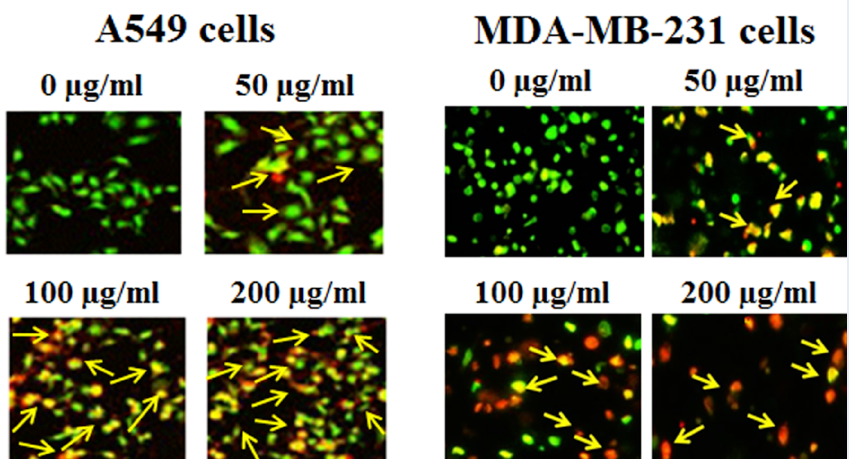Oxidative stress-mediated caspase-dependent intrinsic apoptosis and proautophagic therapeutic potential of Salvia moorcroftiana Wall. ex Benth. growing in the Kashmir Valley, India
DOI:
https://doi.org/10.15419/bmrat.v8i11.708Keywords:
Apoptosis, autophagy, cancer, caspase, oxidative stress, Salvia moorcroftiana wall. ex Benth.Abstract
Background: Salviamoorcroftiana Wall. ex Benth. is a herbaceous perennial plant indigenous to the Himalayan mountains and especially common in the Kashmir Valley, India. This plant was selected based on its ethnopharmacological promise and the dearth of scientific reporting on its biological activity. This study examined the anticancer therapeutic potential of Salviamoorcroftiana Wall. ex Benth. and also sought to demonstrate its induction of apoptosis, autophagy, and oxidative stress in lung and breast cancer cells.
Methods: Soxhlet's extraction technique was used to obtain an ethanolic extract of Salviamoorcroftiana. A 3-(4,5-dimethylthiazol-2-yl)-2,5-diphenyltetrazolium bromide (MTT) assay was used to evaluate the effects of an ethanolic extract on cell proliferation, and acridine orange/ethidium bromide (AO/EB) staining was used to assess apoptotic cell morphology. Transmission electron microscopy was used to detect autophagy, and 2'-7'dichlorofluorescin diacetate (DCFH-DA) staining was used to measure oxidative stress. Apoptosis and autophagyrelated protein levels were assessed with western blotting.
Results: The ethanolic extract showed concentration and time-dependent inhibition of proliferation against A549 and MDA-MB-231 cell lines with IC50 values of 129.32 µg/ml and 118.12 µg/ml, respectively (*p < 0.05). The AO/EB staining revealed that ethanolic extract brings about apoptotic transformations in both cell lines, further supported by western blotting showing higher caspase 3 and 9 and Bax expression and lower Bcl-2 expression. TEM analysis and western blotting showed the formation of autophagosomes and higher expression of LC3B-I and LC3B-II in A549 and MDA-MB-231, respectively, confirming autophagy. Finally, the DCFH-DA staining showed concentration-reliant augmentation of intracellular ROS production in A549 and MDA-MB-231 cells, indicating the induction of oxidative stress by the ethanolic extract.
Conclusion: This study showed the remarkable anticancer activity of an ethanolic extract of Salvia moorcroftiana Wall. ex Benth. roots via apoptosis, autophagy, and oxidative stress. Natural drug discovery and design against lung and breast cancer could benefit from these findings.

Published
Issue
Section
License
Copyright The Author(s) 2017. This article is published with open access by BioMedPress. This article is distributed under the terms of the Creative Commons Attribution License (CC-BY 4.0) which permits any use, distribution, and reproduction in any medium, provided the original author(s) and the source are credited.
